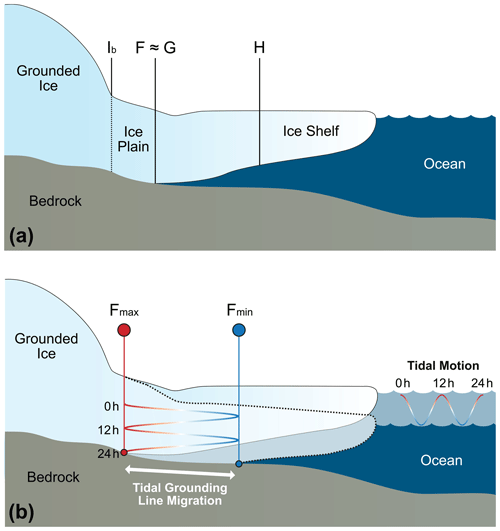2023-09-26 カリフォルニア大学サンディエゴ校(UCSD)
◆この研究は、ICESat-2衛星観測を活用して、氷床が海洋と接する重要な境界でのダイナミクスを調査し、気候変動に対する南極の反応と世界の海面上昇量を予測する上で重要です。
◆接地線の移動が海氷の安定性に影響を与え、氷が海水の影響を受けて溶ける速度を変える可能性があります。この研究は、氷のダイナミクスにおける短期的な変化を強調し、長期的な氷床変化を正確に測定するために潮汐の影響を考慮する必要性を示しています。
<関連情報>
- https://today.ucsd.edu/story/antarcticas-floating-boundary-moves-up-to-nine-miles-with-the-tide
- https://tc.copernicus.org/articles/17/4079/2023/tc-17-4079-2023.html
氷・雲・陸面高度計2号(ICESat-2)のレーザー高度計測から明らかになった南極の潮汐による接地線移動の様相。 Modes of Antarctic tidal grounding line migration revealed by Ice, Cloud, and land Elevation Satellite-2 (ICESat-2) laser altimetry
Bryony I. D. Freer, Oliver J. Marsh, Anna E. Hogg, Helen Amanda Fricker, and Laurie Padman
The Cryosphere Published:26 Sep 2023
DOI:https://doi.org/10.5194/tc-17-4079-2023

Abstract
Tide-forced short-term migration of the grounding line (GL) of Antarctic ice shelves can impact ice dynamics at the ice sheet margins and obscures assessments of long-term GL advance or retreat. However, the magnitude of tidally induced GL migration is poorly known, and the spatial patterns and modes of variability are not well characterised. Here we develop and apply a technique that uses Ice, Cloud, and land Elevation Satellite-2 (ICESat-2) repeat-track laser altimetry to locate the inland limit of tidal ice shelf flexure for each sampled tide, enabling the magnitude and temporal variability of tidal GL migration to be resolved. We demonstrate its application at an ice plain north of Bungenstockrücken, in a region of the southern Ronne Ice Shelf subject to large ocean tides. We observe a 1300 km2 area of ephemeral grounding over which the GL migrates by up to 15 km between low and high tide and identify four distinct modes of migration: linear, asymmetric, threshold and hysteresis. The short-term movement of the GL dominates any long-term migration signal in this location, and the distribution of GL positions and modes contains information about spatial variability in the ice–bed interface. We discuss the impact of extreme tidal GL migration on ice shelf–ocean–subglacial systems in Antarctica and make recommendations for how GLs should be more precisely defined and documented in future by the community.


